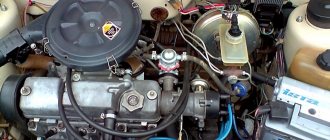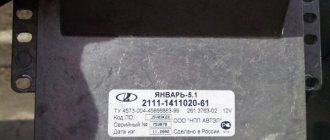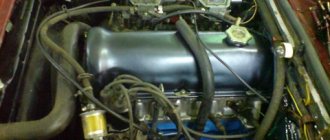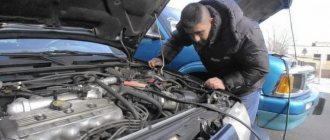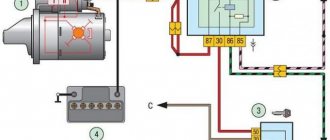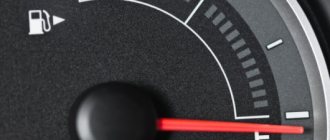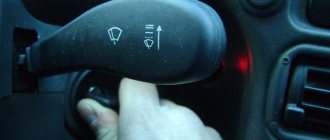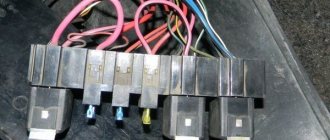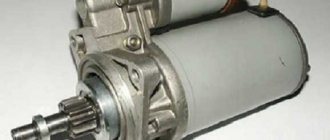Useful tips
If you can’t start a carburetor engine, you should try the following:
- lift the hood and perform a visual inspection of the carburetor;
- Check the secure fastening of all terminals and wiring. After all, sometimes the problem is in a loose terminal, therefore, without checking it, the entire carburetor is subject to repair. Financial costs increase significantly;
- Sometimes the cause of poor starting of the car is overheating of the fuel pump. If it is too hot, it may soon fail, and it is better to purchase and install a new one;
- At the same time, it is necessary to evaluate the performance of oil filters.
How to improve the launch?
It is recommended to keep the fuel-air mixture as lean as possible. At the moment of starting the engine, squeeze the gas to half. Sometimes you need to press the accelerator pedal all the way. But this should be done only once - otherwise the mixture may become over-rich.
If the spark plugs in the engine flood, you will have to unscrew and dry them yourself, using a hairdryer or any other available means.
Why doesn't a hot VAZ-2109 start?
When the engine is running, a considerable amount of air passes through the carburetor, cooling it. The same thing happens with gasoline. It turns out that when the engine is running, the carburetor is heated up much less than the engine itself. This temperature ratio remains unchanged until the engine stops running. As soon as the engine stops working, the carburetor begins to heat up from the hot engine body.
Since there is no air flow, the carburetor takes heat away from the engine in a very short period of time. At the same time, a certain amount of gasoline that remains in the float chamber intensively evaporates due to the high temperature, filling the intake manifold, air filter and the carburetor itself. Nothing remains in the float chamber itself, but gas plugs form in the fuel system.
Further developments depend on the time the engine is stopped and the ambient temperature. If the stop time is from 5 to 30 minutes and the engine starts, the combustion chambers will receive a mixture over-enriched in fuel vapors. As a result, the consistency is disrupted and dry spark plugs are filled with fuel. We got to the main reason for poor engine starting.
The problem that worries me:
I have the following problem: I have a VAZ 21093 made in 1997, for the last 3 weeks, it has become very difficult to start it when the engine is hot, not immediately, but after the car has been standing for 10-15 minutes (I haven’t exactly timed it). When cold it starts literally with half a turn, in winter at -30, it also started normally. I have a new carburetor (only 1000-1500 km done), and the other day I went to the carburetor mechanic to have him check everything again (fuel level, etc.) - everything was in order except the choke cable - I already changed it, also the other day I installed new NGK spark plugs (on one of the old ones the insulator was damaged, but nothing was working; when replacing it, it turned out that the spark plugs were screwed in almost by hand - they tried so hard in the service at the time), a new VARTA battery (although in these weeks I I've already hooked him up a little). By very difficult to start, it means that you have to turn the starter for almost a minute to get it to start and press the gas pedal, and you turn and turn until it catches. I asked at one service center, the guys said that this was a feature of the engine and nothing could be done about it, because... in 15 minutes, gasoline vapors form in the carburetor, something like an air cushion, and you have to learn to live with it. I don't believe them, what is your opinion?
Answers from the forums:
- The same crap, only in a milder form. I don’t start up immediately by pressing the gas, but as soon as it starts to grab a little.
- 1. Check the OZ. 2. Check with two people (in the dark with the hood open) the condition of the explosive part for leaks at start-up. 3. Before turning off the throttle. 4. Start hot with gas and without suction.
- An excess of fuel pressure is formed at the inlet to the float chamber. It can form for two reasons:
1) the valve in the fuel pump does not work. 2) there is no circular circulation of fuel along the line along the return line and through the tank. Most likely the return line or the valve on it does not work, or the nozzle on the carburetor is clogged. If there is excess fuel at the inlet, the needle may not withstand the pressure, squeeze out and let fuel into the carburetor, it will flood.In the summer, you will get stuck with steam locks. You need to vent the return line and (or) change the pump. It may also be that the floats are not positioned correctly and get stuck behind the walls of the chambers. It will also overflow. You always need to look at a new carb - now you can’t trust the plant - these are not the times.
- The switch is, of course, an unpredictable thing... Mine recently died. It started when I started it in the morning, warmed it up a little, and just as I was getting ready to drive, the car stalled and would not start again. In the evening, a friend arrived (on a 9-carb), they began to look for the cause, searched for a long time, then they installed my switch for him, it started up, they installed it back, it started up for me, I decided that somewhere there was something wrong. A few days later everything happened again, only I couldn’t leave for work after lunch. In the evening we started with the switch, it turned out to be dead. I installed a new one. Only it didn’t have any effect on the hot start-up, it started just as badly as it started. I’m also thinking about doing this this weekend, blowing out the return line, and experimenting with the pump.
- Same problem. I’m also racking my brains about what could be messing with my brain. The return line is normal. I checked it over the weekend and fixed the jambs. The switch is also 100 normal BOSH no matter what. All thoughts are carb and fuel pump. The point of the campaign is that when idle, gasoline evaporates in a heated carb and the level drops, so you have to oil it so that the level gets back into place and then it starts normally...
- When it is hot, when stopping and if the cart stands for more than 5 minutes, the carb heats up from the engine, the bottom begins to evaporate intensively, clogging everything, and when starting up, over-enrichment occurs. These are the things to do. What you need to do when starting up is to press the gas pedal to the floor and start it, it will start faster than **clean it off. When it starts, give it a good throttle. It is also useful before parking the car for more than 10 minutes. Propagation also helps
Why does a hot engine stall?
The situation when the car stalls while driving is even less pleasant. What should be done?
- The behavior of the Hall sensor on the carburetor is checked. This sensor is held on the distributor by two bolts. You need to unscrew the fasteners and replace the old sensor with a new one. Then put everything back together and check how the carburetor works.
- Understand the current performance of the switch.
- Replace both parts as necessary.
- Blow out the fuel pipes. If they are damaged, they must be replaced immediately.
- You need to find the timing belt, remove it, and evaluate the condition of the teeth. If you find that they are worn out, change the belt.
- If the cause is not found by visual inspection of contacts, tubes and other components, you will have to disassemble the carburetor.
- Let a trusted carburetor technician handle the carburetor adjustments. It’s a good idea to undergo a full diagnostic at a car service center.
The fuel pump has overheated - a common problem in domestic cars.
The fuel pump cools naturally by pumping cool liquid from the fuel tank. But in extreme heat, this liquid cannot be cool in any way, so the fuel pump overheats. This is an unpleasant incident that can lead to the impossibility of starting the car when it is hot. The car may simply stall on the road and not start either with a pushrod or by starting it by turning the ignition key. There are several ways to fix this problem:
- take a wet and cold rag, apply it to the fuel pump and periodically moisten it with cold water, cooling it;
- open the hood and place the car in the shade, allow all parts of the power unit to cool normally;
- change the fuel pump if you have the opportunity to quickly obtain another part of the fuel system;
- just wait until the temperature of the fuel pump returns to normal and continue operating the car;
- An overheated fuel pump is unlikely to work normally, so it’s better to just change it.
This problem can cause the failure of important parts of the fuel pump, because when it overheats, it stops working for a reason. If after cooling the car nothing changes, then you will have to replace the fuel pump. But usually the car starts when cold, and then drives for several days without any problems.
We recommend: Airbags and tow trucks
Depending on the design of the engine, there may be different problems. If an injector is installed in the car, then with an 80% probability one of dozens of sensors is faulty. Gas plugs may occur in carburetors; for gas equipment, the problem is the pressure inside the system. In many cases, cooling the engine or fuel pump helps.
In the worst case scenario, you will have to replace the damaged part.
If the carburetor starts to stall at idle
This situation often occurs in carburetor VAZ-2109 cars. You can do the following with your own hands:
- needle replacement;
- cleaning the jets in the solenoid valve;
- replacing the idle speed sensor if a fault is detected in it;
- Sometimes the needle valve gets stuck. There is a popular effective method. If the carburetor does not want to start when hot, a spring is put on the valve;
- The solenoid valve control unit and wiring are checked. And then the car will start.
If you turn to an experienced carburetor for advice, he, based on his practice, will definitely tell you that by carefully inspecting the car’s components and replacing worn and damaged carburetor elements, their previous functionality will return. And then the car will start without problems - whether hot or cold.
Repair step by step:
Independent actions: Turn the ignition key, check the starter. The key turns and the starter starts to turn, then the source of the “trouble” is definitely somewhere else. If the starter does not function, then it needs to be replaced. The presence of fuel in the tank is checked; its level indicators do not need to rely solely on the sensor information. His testimony is not always correct.
Is there a spark
Any of the spark plugs is removed, connected to the high-voltage wiring and then in contact with ground (engine). In this case, you cannot do without a partner, because someone needs to sit behind the wheel and periodically turn the starter. It's great if a spark appears on the tip. If it is not there, then the switch is replaced with a new one.
The spark is also checked on the central wiring (relative to the coil)
Everything is checked, just like the spark plug. And if a spark does not appear, then the coil has probably become unusable. It needs to be changed.
Assessing the state of the power system
Gasoline may contain water, which will turn into ice in frosty weather.
You can check: just open the air valve and press the fuel pump button a couple of times. If you hear a gurgling sound, it means gasoline is entering the carburetor. If there are no “bulls”, the carburetor cannot be started when cold (since some of the fuel is already frozen). You can't do without replacing the fuel pump.
Fine fuel filter
What condition is he in? If there are cracks, damage or other visible defects, the filter will also have to be changed. The hoses responsible for supplying gasoline and the hoses going from the pump to the engine must be solid. If there are cracks or defects, they must be replaced with new ones.
Spark plug
The spark is checked. All spark plugs are unscrewed and inspected for traces of soot. And if the spark plugs are black (this is the effect of carbon deposits) and are filled with gasoline, then cleaning them with sandpaper is pointless. The effect will be zero. They can only be restored by heating them on a gas stove. Or you can simply replace the old spark plugs with new ones.
Distributor wires (high voltage)
They are removed, inspected - they are interested in their integrity, there should be no damage. If they exist, then that’s it - you’ll have to purchase and install a new set on your car. Distributor cover If, upon inspection, chips are found inside it, contacts are scorched, then everything indicates wear and loss of functionality. The solution may be to replace the device. At the same time as the lid, the slider must also be changed.
Hall Sensor
It is not uncommon for a carburetor to start poorly due to a broken Hall sensor. It is located on the distributor and is attached to it with two bolts. The fastening elements should be unscrewed, the wires should be disconnected and now the old sensor should be replaced with a new one. Everything is also assembled in the reverse order and you're done! The "vitality" of the carburetor can be checked.
Layout of the “high-voltage” parts of the distributor Very often, “masters”, due to lack of experience or due to inattention, when repairing their car on their own, make mistakes when reassembling the distributor. This may apply to high-voltage wires that are connected in a certain way. The wire, marked with the number 1 on the cover, comes from the extreme “left”, the so-called first cylinder. The next one in a clockwise direction is cylinder 2, then No. 4, and only after that is No. 3. And if they are not in place, then the car may start to “triple” wildly or the carburetor will not start at all.
Timing belt
This timing belt (aka gas distribution mechanism) can be found on the left, immediately under the casing. It needs to be removed and the condition of its teeth assessed. They may be partially cut off or fall off. It's easier to change the belt right away. Although it is possible that the 1.3-liter. the engine may bend the valve.
It is advisable to resolve such issues with the help of specialists. If, even after checking each component of the VAZ 2109 car step by step, you could not find the answer to your question: why the carburetor does not start, go to a service station. Almost always, a spatial inspection of all components of the car, with the replacement of worn and damaged elements, literally immediately breathes new life into the carburetor. And it starts working as before: it starts easily (both hot and cold).
A cold VAZ 21083 engine does not start well
- Registration
- Entrance
- To the beginning of the forum
- Forum Rules
- Old design
- FAQ
- Search
- Users
After parking the car overnight, the following happens. I turn on the ignition, lightly press the gas pedal several times, pull out the choke all the way and start it. The car starts easily, but after 5-10 seconds of operation it stalls and refuses to start at all. I unscrewed the spark plugs, they turned out to be wet, it turns out that they were flooded. Even if it doesn’t stall (I have to give it more gas if I have time), the engine does not run smoothly. Once the car is warmed up to at least 50 degrees and the choke is turned off by half, the engine starts running smoothly and without problems. When hot, the engine starts with half a turn. Help, what's the problem?
Car: VAZ-21083 1997 carb.
After parking the car overnight, the following happens. I turn on the ignition, lightly press the gas pedal several times, pull out the choke all the way and start it. The car starts easily, but after 5-10 seconds of operation it stalls and refuses to start at all. I unscrewed the spark plugs, they turned out to be wet, it turns out that they were flooded. Even if it doesn’t stall (I have to give it more gas if I have time), the engine does not run smoothly. Once the car is warmed up to at least 50 degrees and the choke is turned off by half, the engine starts running smoothly and without problems. When hot, the engine starts with half a turn. Help, what's the problem?
Car: VAZ-21083 1997 carb.
Why are you pressing the pedal? (and several more times.
In your case, I would advise starting (for an experiment) with the choke 1/3 extended and the shoe on the floor. (at least when flooding, this will allow the cylinders to be blown out and the engine to seize after a few seconds.
I can’t understand why the engine stalls after the first start?
Everything is very simple - with the choke extended - so that the car does not stall after the factory, the diaphragm of the starting device slightly opens the air damper - thereby supplying air so that the spark plugs do not immediately flood - if it opens too much, the mixture becomes very lean and the engine stalls, i.e. - at the first flashes the engine does not have enough gasoline, the solution is simple - at the back of the carb there is an adjusting screw for opening the air damper; it is still secured with a nut - it must be tightened 0.5-1 turn - and the engine will start again the first time
It didn’t help, and with the onset of frost -30-35, you have to “force” the engine, battery and starter, in such frosts it starts only after at least 5 attempts!
To start a cold engine, the mixture must be rich; for a hot engine, on the contrary, it must be lean. If the warm engine starts, then your mixture is lean. There is no need to press the pedal when starting. As a last resort, press the floor and blow out. The engine should pick up itself if the carb is adjusted. If not, adjust the starting gaps and the starting device (replace the membrane).
Everything is very simple - with the choke extended - so that the car does not stall after the factory, the diaphragm of the starting device slightly opens the air damper - thereby supplying air so that the spark plugs do not immediately flood - if it opens too much, the mixture becomes very lean and the engine stalls, i.e. - at the first flashes the engine does not have enough gasoline, the solution is simple - at the back of the carb there is an adjusting screw for opening the air damper; it is still secured with a nut - it must be tightened 0.5-1 turn - and the engine will start again the first time
It didn’t help, and with the onset of frost -30-35, you have to “force” the engine, battery and starter, in such frosts it starts only after at least 5 attempts!
To start a cold engine, the mixture must be rich; for a hot engine, on the contrary, it must be lean. If the warm engine starts, then your mixture is lean. There is no need to press the pedal when starting. As a last resort, press the floor and blow out. The engine should pick up itself if the carb is adjusted. If not, adjust the starting gaps and the starting device (replace the membrane).
I’m finally embarrassed to ask, what kind of car do you have and what kind of carburetor?? I mean, I’ve never seen two adjustment bolts on DAAZs of the 08th family.
Diagnosis of sensor failure
Let's consider deviations in engine operation and the corresponding possible causes. Unstable operation at idle, difficult starting or stopping the engine after driving in high power mode can be caused by malfunctions of the mass air flow sensor (MAF) - it will give the controller at low speeds readings that are 15–25% higher. If there is excessive fuel consumption or the engine response has decreased, the mass air flow sensor gives underestimated readings.
Jerks and dips when switching from idle to operating speeds, even in the case of light loads, means that the operation of the sensor that reads the throttle position has been disrupted. Difficulty starting a warm engine or slight excess fuel consumption - the coolant temperature sensor has failed.
Diagnostics of contactless ignition system
In recent years, cars have been equipped with a contactless system. Checking this system does not require any special tools. Everything can be purchased at your nearest auto supply store.
It is more rational to carry out diagnostics of the MD-1 sensor. It is connected to the place of the switch. Next, turn on the ignition.
Working with the sensor is very simple. It has three indicators:
- “P” – indicates the proper functioning of the ignition switch;
- “K” – shows the state of the primary winding;
- “D” – shows the proper operation of the hall sensors when the starter is turned on.
If all indicators work, then there are no malfunctions.
